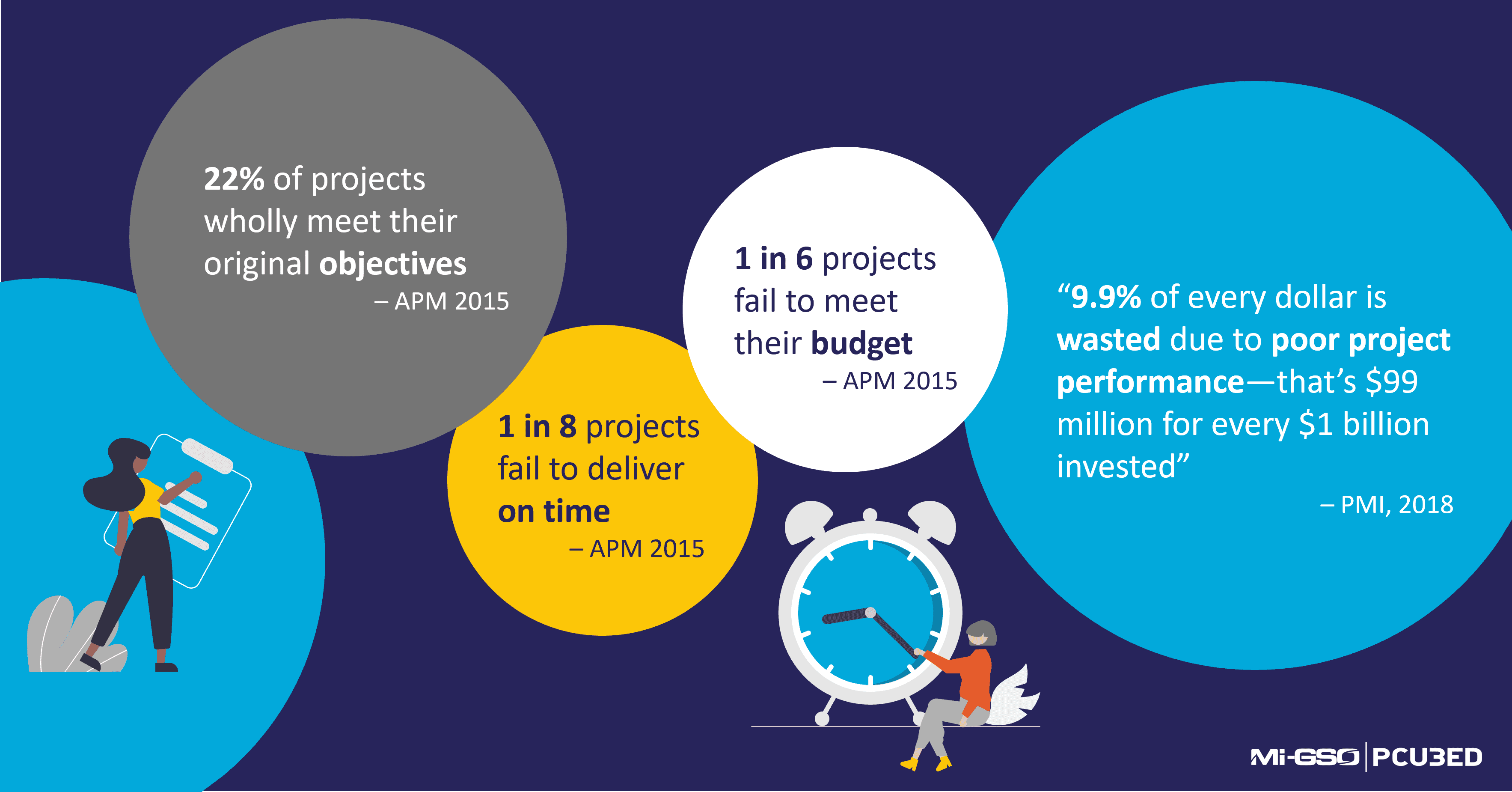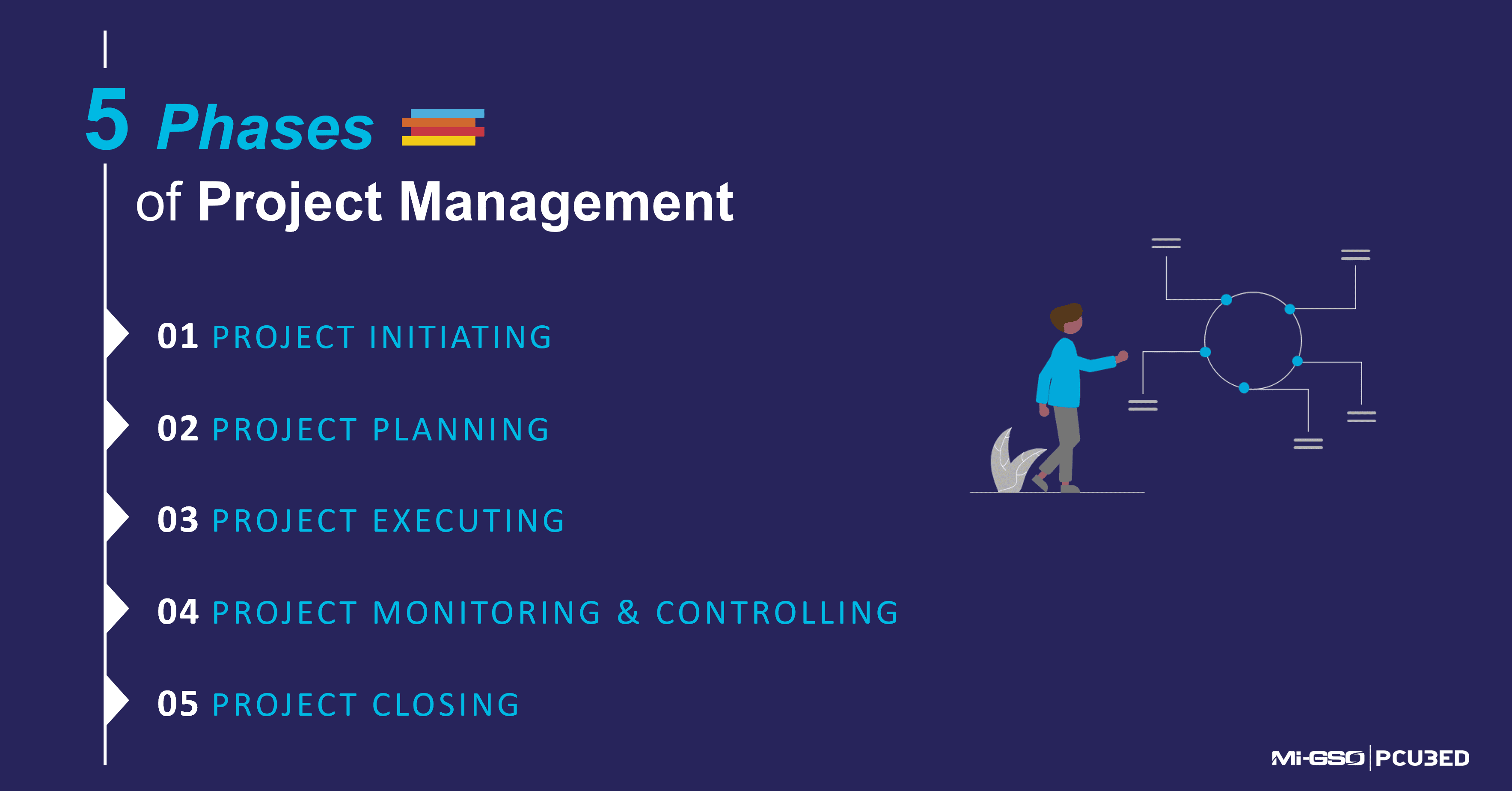Our website is not supported on this browser
The browser you are using (Internet Explorer) cannot display our content.
Please come back on a more recent browser to have the best experience possible

Project management is the method used to ensure that a project not only delivers tangible results but also aligns with an organization’s strategy. Learn about the power of effective project management and how it can make your business more successful.
Project management (PM) is the set of processes used to manage projects across their lifecycle from initiation to close. Projects should have a defined beginning and end. This is how they differ from day-to-day operations. Typically led by a project manager, a project is executed by a qualified project team, applying specific knowledge, methods and tools to achieve a desired outcome.
“Project management (PM) is the set of processes used to manage projects across their lifecycle from initiation to close.”

Each project aims to solve a specific problem or introduce a solution – that’s what separates it from operational work. This could be implementing a new IT system, building or remodeling a new office, or developing a new product or service.
Each initiative is unique, so the project manager should start by clarifying both the business case and the project scope. They can do that with their project stakeholders – those people with a valid interest in the project.
Your project stakeholders should be involved from the beginning as they are the key to defining detailed project requirements and identifying risks early-on. In this way, the project scope can be tailored to account for any identified constraints before the project is kicked off. This is just one of the ways project management can help to ensure a project’s successful delivery.
So, what if an organization is running multiple projects concurrently? They may find benefit in implementing a PMO, or project management office. Separately, organizations may find it beneficial to partner with a project management consulting firm. This will allow them to gain access to project management expertise and best practices that they may not have in house.
Project Management is not just about completing projects on time; it’s about aligning everyone on the right tools and processes to do so. It requires leadership, communication, and critical thinking. There are also different methodologies to follow – Agile, Scrum, Predictive, Hybrid, etc. – so choosing the right one or the right combination of methodologies takes thought and analysis.
According to the Project Management Institute (PMI)’s 2018 Pulse of the Profession, “only 58% of organizations fully understand the value of project management.” (PMI, 2018) However, when you look at the statistics below, the value of strong project management practices to deliver projects seems clear.
Sentiment around the value of project management is rising. In PMI’s latest pulse of the profession report, “More than two-thirds (69 percent) of project professionals say their senior leadership highly values project management, and nearly half (46 percent) of organizations prioritize developing a culture that values project management.” – PMI, 2020
When the right people, tools, and processes come together and are centered around common objectives, companies see success well beyond a single project’s completion. One way to ensure your project management practices are strong is to continuously manage projects across the stages of its lifecycle using the 5 Phases of Project Management.
Study Tip: For those preparing for the PMP exam, PMI refers to these phases of project management as “Process Groups”

There are 5 key groups of project management that support every phase of a project – project initiating, project planning, project executing, project monitoring & controlling, and project closing. These Phases make up the project management lifecycle, and must be followed to ensure the project meets its objectives, stays within budget, and adds value to an organization.
There are multiple sources of Project Management standards and methodologies, many of which also offer certification courses – PMI, APM, PRINCE2, etc. Each may slightly differ in their naming convention for these 5 key Phases of Project Management. Nevertheless, the Phases are analogous and achieve the same result: walking through the project from start to completion while planning for and monitoring progress throughout.
Also note that when following an Agile methodology, these 5 Phases will not be linear. Agile approaches follow an iterative approach, where the project outcomes are realized sooner and then expanded on or improved with each development cycle. Nevertheless, understanding the basic project management life cycle is important. Whether a linear or cyclical approach, a project has a beginning and an end, which requires careful planning and monitoring of progress throughout.
A project begins in the initiation phase, where an organization identifies the need for a project and develops a business case for it. This includes a business analysis and justification for the project (a feasibility study). The organization must also take into account the needs and effects on relevant stakeholders.
The outcome of the initiation phase is a Project Charter that defines the project objectives, who it will impact, and why it is needed by the organization.
Once a project is approved, it moves to the planning phase. Project Planning lays the roadmap for the project. This includes what work needs to be completed, which resources will do it, and how much money can be spent.
PMI’s Project Management Body of Knowledge (PMBoK) breaks down the following key Knowledge Areas, which should be used for planning: Integration, Scope, Schedule, Cost, Quality, Resources, Communications, Risk, Procurement, Stakeholders.
Study Tip: For those preparing for the PMP exam, the latest PMBOK identifies Planning as one of the Performance Domains among the following: Stakeholders, Team, Development Approach and Lifecycle, Project Work, Delivery, Measurement, Uncertainty. This differs from the previous Knowledge Areas referred to above.
Under Scope Management, the scope of work is defined and the tasks to be completed are outlined in a Work Breakdown Structure. Resources are identified with their roles and responsibilities clarified in the Resource Breakdown Structure and Communications Plan. Costs are outlined in the Cost Breakdown Structure, and the Budget Baseline is created thereafter. Risk Management is an important part of this phase so that issues can be prevented down the road.
As you can see, many core PM activities occur during the planning phase. Therefore, when someone talks about the project management plan it’s important to note that they may not be referring to the project schedule or project plan alone.
Project Executing is where the project team implements and follows through on what was outlined in the planning phase. This is where the work is completed, and that requires oversight and coordination, which fall on the shoulders of the Project Manager(s). Using a project management framework, they:
Monitoring and Controlling is the process of tracking and reviewing the status and performance of the project to ensure each activity is completed properly, on time, and within budget.
Once the project is up and running, Project Managers are accountable for estimating the completion date, ensuring the project stays within budget, and updating on the project status. Knowing exactly what is going on in the project allows stakeholders to make proactive decisions to correct any task that falls behind or any risk foreseen.
There are many different tools and management software that can make this process easier and more efficient. The challenge is actually in integrating the different tools and getting quality data out of them to make decisions. Digital Dashboards are great tools to help a project team move from reactive to proactive ways of working.
When the project is ready to conclude, we enter the Project Closing phase. Here, the project team and stakeholders review the project to ensure it met their objectives and definition of success.
Project Closing should also include a retrospective, where the team identifies what went well, challenges faced, and lessons learned. This is important to identify areas for process improvement.
Key questions to ask when reviewing a project:
Project management is changing rapidly as organizations become global and remote teams are the norm. The reality is a project manager may never actually meet the team members in person but advances in technology allow constant connectivity.
Digital skills follow on from this. The competency to use technology to the advantage of the project is imperative. From online data analysis to research and collaborating with colleagues worldwide, keeping up with how technology can improve results is an important aspect of a project manager’s professional development.
Project management roles are also expected to grow over the next few years. PMI reports that by 2027, employers will need nearly 88 million individuals in project management-oriented roles.
With a growing demand for project managers and for a digital skillset, there are many opportunities for professionals looking to take their career into the modern sphere of project management. That includes project managers looking to expand their skill set as well as young professionals looking to start a career in this field.
We combine our expertise with a fine knowledge of the industry to deliver high-value project management services.
MIGSO-PCUBED is part of the ALTEN group.
Find us around the world
Australia – Canada – France – Germany – Italy – Mexico – The Netherlands – Portugal – Romania – South East Asia – Spain – Switzerland – United Kingdom – United States
© 2024 MIGSO-PCUBED. All rights reserved | Legal information | Privacy Policy | Cookie Settings | Intranet
Perfect jobs also result from great environments : the team, its culture and energy.
So tell us more about you : who you are, your project, your ambitions,
and let’s find your next step together.
Dear candidates, please note that you will only be contacted via email from the following domain: migso-pcubed.com. Please remain vigilant and ensure that you interact exclusively with our official websites. The MIGSO-PCUBED Team
Choose your language
Our website is not supported on this browser
The browser you are using (Internet Explorer) cannot display our content.
Please come back on a more recent browser to have the best experience possible
